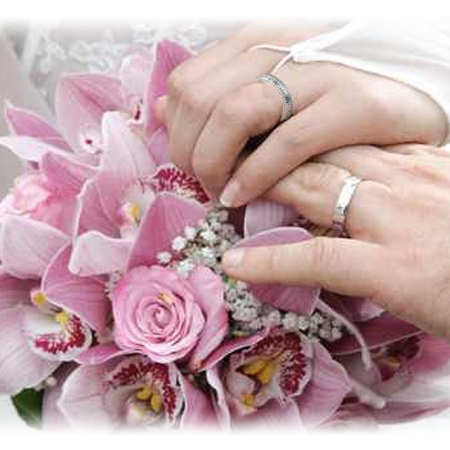Vintage Wedding Bands For Women | 10 Year Anniversary Ring

Vintage anniversary rings make a gorgeous gift, and are a keepsake that will last a lifetime. There are many great jewelry eras to draw inspiration from when searching for the perfect ring.
Georgian Rings (1714-1830)
Georgian rings are known for intricate details and colorful appearance. Large diamonds weren’t easy to come by, so other gemstones were used instead. These rings were created to celebrate romance, beauty, and sentimentality, often using themes from nature such as scrolls, flowers, doves, and wheat stalks. Vintage anniversary rings from the Georgian era were the first to feature large stones set in open facets in an effort to add more light reflection, increasing the glow of the diamond or gemstone.
Early Victorian Rings (1837-1860)
Victorian anniversary rings can be recognized by their bold designs and large size. These rings often feature large, brightly colored gemstones surrounded and accented by clusters of diamonds. Popular designs included snakes (as a sign of eternal love), Celtic designs, Gothic symbols and letters, and natural designs such as butterflies, garlands and clovers. For added detail, early Victorian rings were often accented with ivory, tortoise shell, or coral.
Mid-Victorian Rings (1860-1885)
The Mid-Victorian era saw the introduction of rose gold and a rise in the popularity of silver rings. Rings made during this time were less ornate, and more sophisticated and practical. Though rings were still handcrafted, this period also began making use of die casting. Popular designs include hearts, stars, shells, flowers and some geometrical shapes.
Late Victorian Rings (1890-1901)
The Late Victorian period ushered in huge changes in the way rings were made. Most rings during this time were machine made and mass produced. The most stylish rings of the time featured large diamonds set in platinum, though gold and rose gold were still widely used. Popular motifs included bows, scrolls, ribbons, grape clusters, stars and Egyptian designs. Most notably, early filigree styles were introduced during this time.
Art Nouveau Rings (1890-1915)
Art Nouveau rings were designed to celebrate symmetry and femininity, featuring flowing lines and swirls, and a return to nature motifs. Vintage anniversary rings from this time period will not usually have one center stone, but instead will showcase small accent diamonds that are included in the circular swirls and loops of the design.
Edwardian Rings (1901-1910)
Edwardian rings were popular at the same time as Art Nouveau rings, but have a distinctly different style. It was during this period that open work filigree-lace designs reached the height of popularity. Edwardian rings often combined this lace work with large and colorful center stones or accent stones. One of the most popular styles features a large central diamond or gemstone surrounded by a circle of smaller stones or pearls to create a flower, or bouquet effect.
Art Deco Rings (1915-1935)
Art Deco rings are known for their bold styling and use of exotic and geometric patterns and shapes. Platinum, white gold and silver were all the rage, as were new and interesting cuts for gems and diamonds.
Retro and Vintage Rings (1935-1945)
Retro and Vintage rings were created during a very uncertain wartime, and they reflect the flowing uncertainty of the times. These rings marry the best of Art Deco geometry with the free-flowing designs of Art Nouveau. Retro rings are known for flashy, memorable designs fashioned out of large diamonds or gemstones that are set in white metals.
Many new vintage style rings borrow the best of each of these time periods, creating rings that exemplify the poetry of yesterday while celebrating the modern styling of today.
Share This Page:












